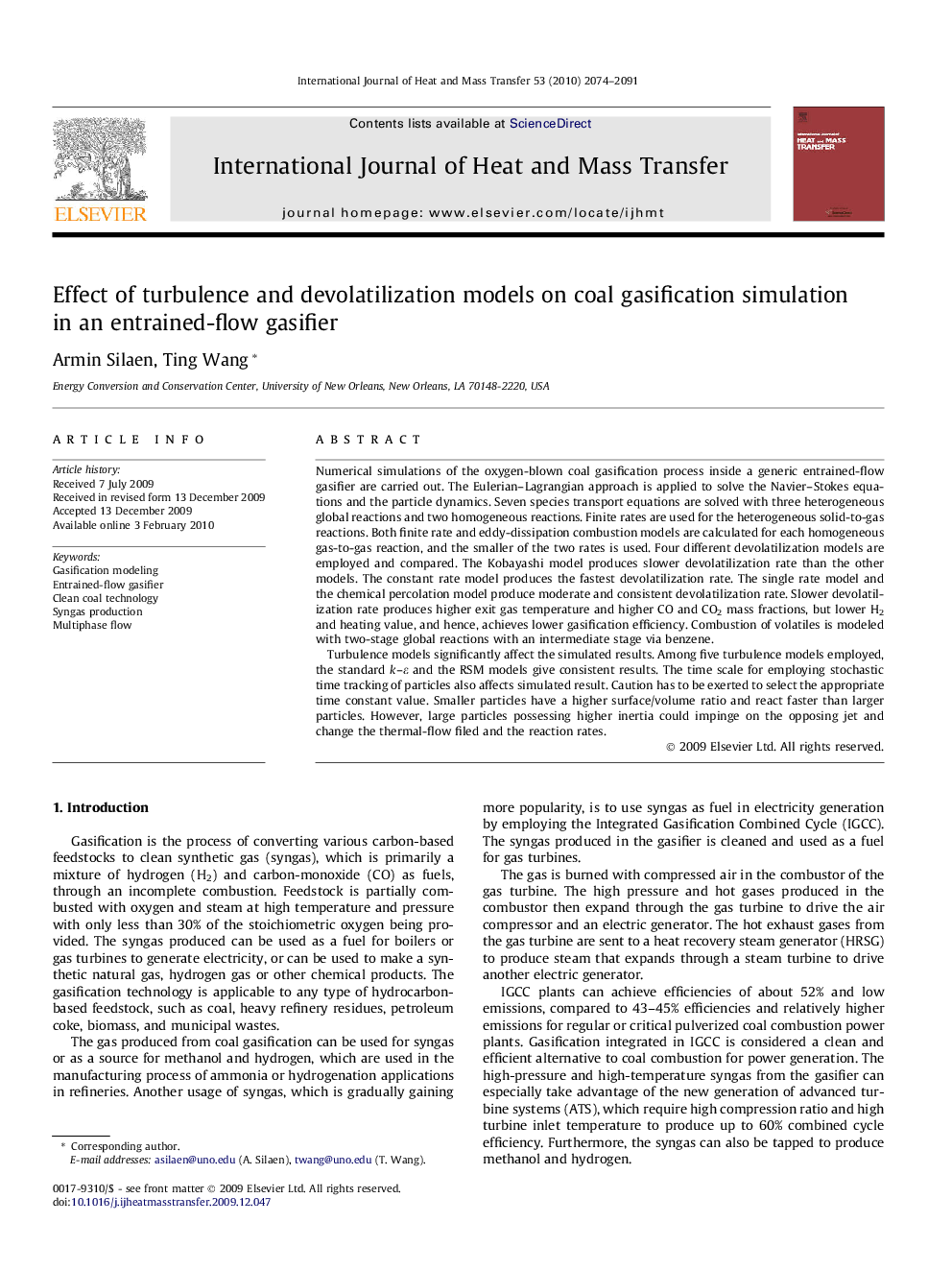| کد مقاله | کد نشریه | سال انتشار | مقاله انگلیسی | نسخه تمام متن |
|---|---|---|---|---|
| 660172 | 1458122 | 2010 | 18 صفحه PDF | دانلود رایگان |

Numerical simulations of the oxygen-blown coal gasification process inside a generic entrained-flow gasifier are carried out. The Eulerian–Lagrangian approach is applied to solve the Navier–Stokes equations and the particle dynamics. Seven species transport equations are solved with three heterogeneous global reactions and two homogeneous reactions. Finite rates are used for the heterogeneous solid-to-gas reactions. Both finite rate and eddy-dissipation combustion models are calculated for each homogeneous gas-to-gas reaction, and the smaller of the two rates is used. Four different devolatilization models are employed and compared. The Kobayashi model produces slower devolatilization rate than the other models. The constant rate model produces the fastest devolatilization rate. The single rate model and the chemical percolation model produce moderate and consistent devolatilization rate. Slower devolatilization rate produces higher exit gas temperature and higher CO and CO2 mass fractions, but lower H2 and heating value, and hence, achieves lower gasification efficiency. Combustion of volatiles is modeled with two-stage global reactions with an intermediate stage via benzene.Turbulence models significantly affect the simulated results. Among five turbulence models employed, the standard k–ε and the RSM models give consistent results. The time scale for employing stochastic time tracking of particles also affects simulated result. Caution has to be exerted to select the appropriate time constant value. Smaller particles have a higher surface/volume ratio and react faster than larger particles. However, large particles possessing higher inertia could impinge on the opposing jet and change the thermal-flow filed and the reaction rates.
Journal: International Journal of Heat and Mass Transfer - Volume 53, Issues 9–10, April 2010, Pages 2074–2091